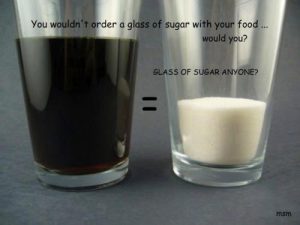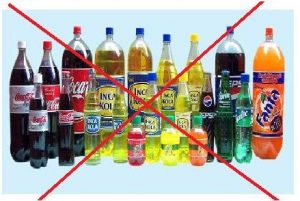 In the US alone, more than two hundred million soft drinks are consumed annually. Dr Clive McCay of Cornell University showed that sodas are capable of completely eroding tooth enamel, leaving them as soft as porridge within two days. Here, the culprit ingredient is a horrendous substance called phosphoric acid. These drinks also contain malic acid, carbonic acid and erythorbic acid, among other things.
In the US alone, more than two hundred million soft drinks are consumed annually. Dr Clive McCay of Cornell University showed that sodas are capable of completely eroding tooth enamel, leaving them as soft as porridge within two days. Here, the culprit ingredient is a horrendous substance called phosphoric acid. These drinks also contain malic acid, carbonic acid and erythorbic acid, among other things.
The malic acid and citric acid found naturally in fruits and vegetables are of such a nature that they become alkaline in the body. Those found in carbonated beverages are still acidic, because they are fractionated and are generally extracted by heat.
Just reading the label of one of these drinks can be enough to alter the PH. In these drinks there are also other harmful ingredients, not to mention refined white sugar, in a proportion of five teaspoons of tea for every four liters more or less. The only difference between regular and diet sodas is that the latter uses a sugar substitute, so pernicious that in the United States each package must carry a warning on the label, the same as cigarettes. Also, most of them incorporate our old acquaintance, caffeine.
Some of the additives they carry are derived from tar, another carcinogen. When fizzy drinks are taken with food, they cause
fermentation rather than aid digestion. Other than fooling the body with the excuse that they taste good, there is no other benefit to soda. It is criminal for us to routinely administer such lethal concoctions to our children.
Caffeine alone should be reason enough not to give them to children. Interestingly, most parents, who do not allow their children to drink coffee, tolerate them drinking caffeinated sodas. You may wonder why caffeine is added to these drinks. According to Dr. Royal Lee of the Foundation for Nutritional Research, “The colas come with a caffeine component, which is habit forming, so that once used to the stimulant, the victim cannot do without it. There is only one reason to put caffeine in a soda, and that is to make sure it builds a habit. ” Here too, having a clear direction is of prime importance. Who can cut with this conglomerate, useless from the nutritional point of view, of acids and carcinogens, do it. There are many carbonated waters on the market that, although not ideal (due to their high content of salt and inorganic minerals) are much better than carbonated drinks.